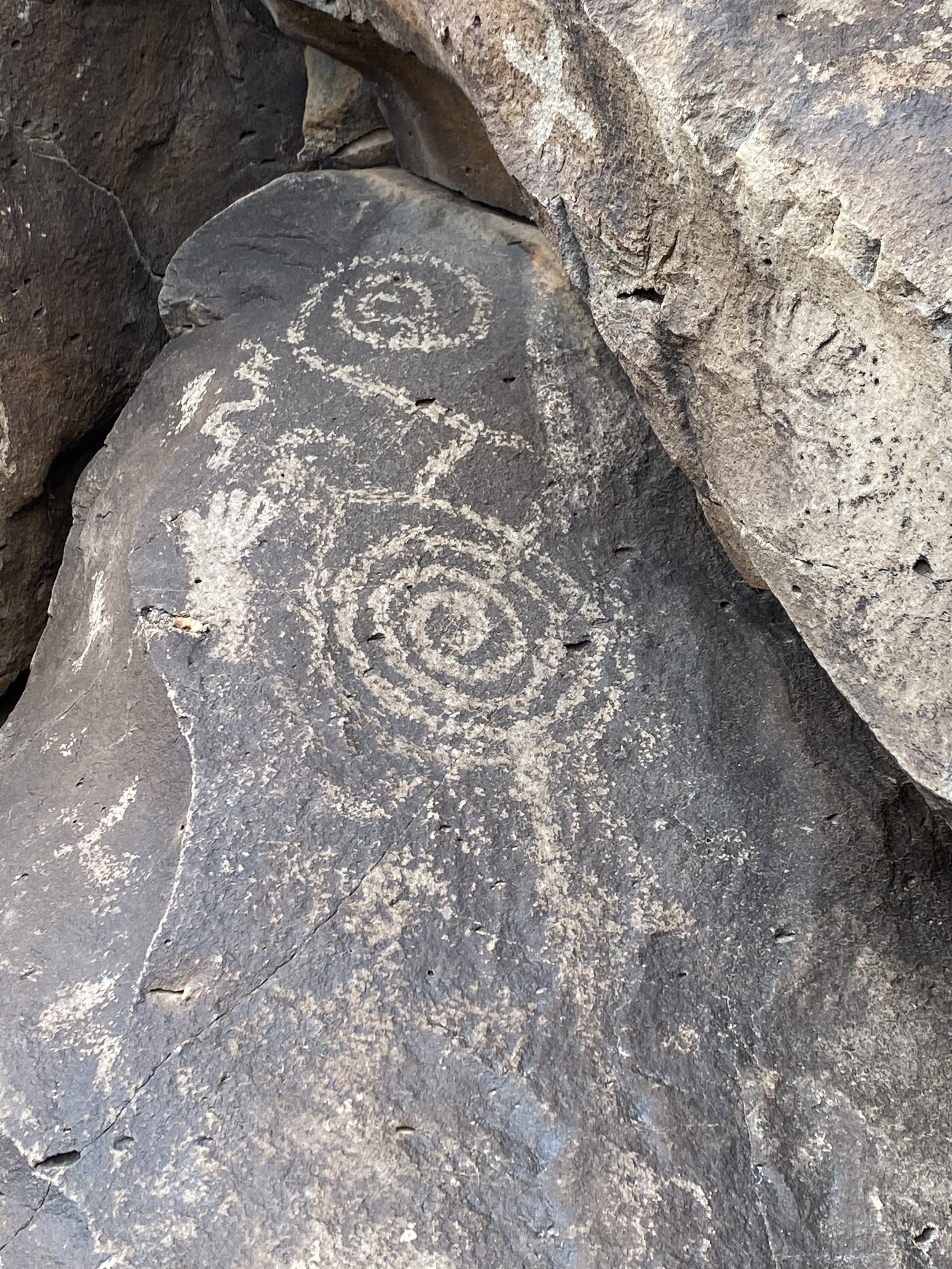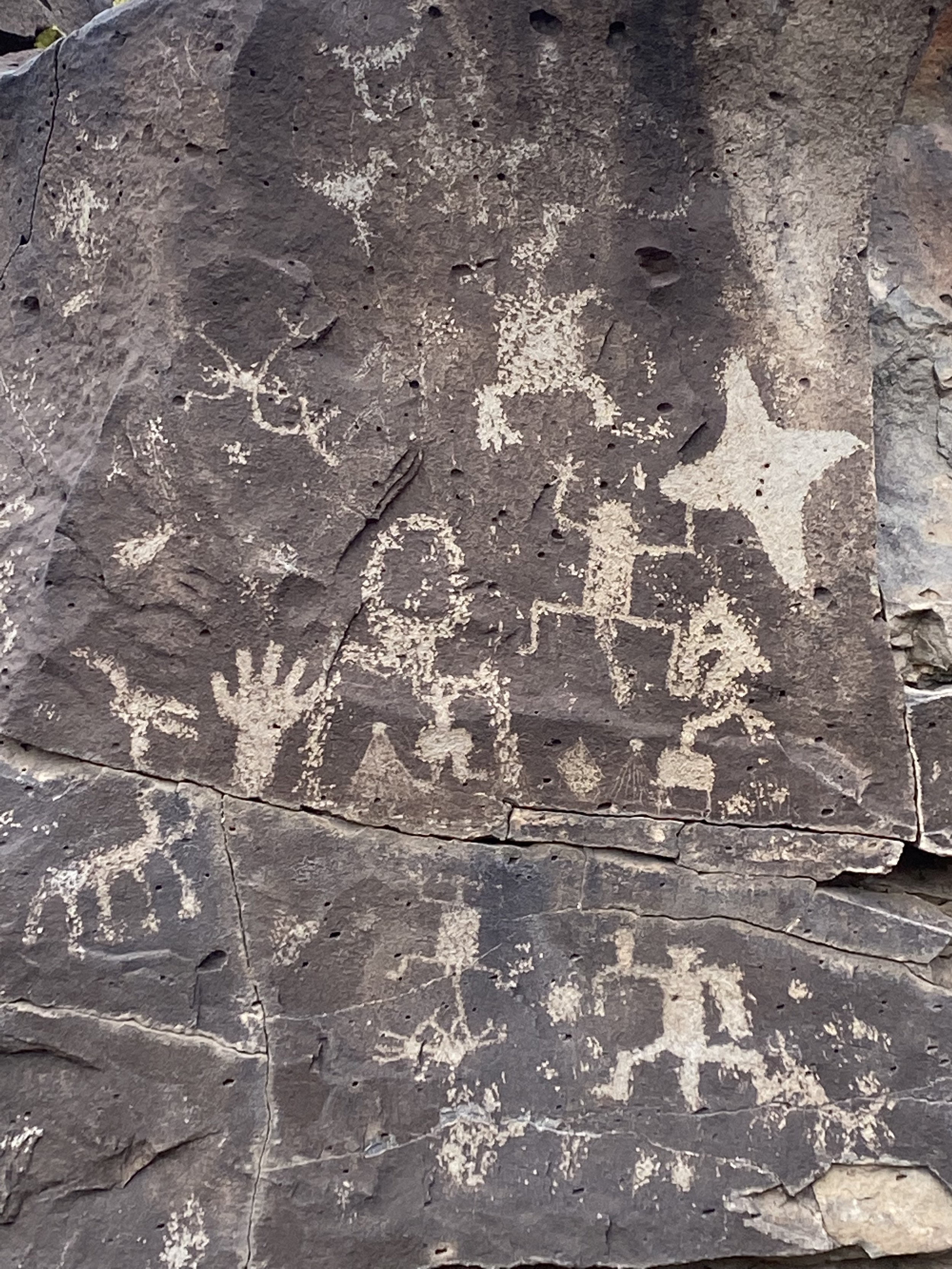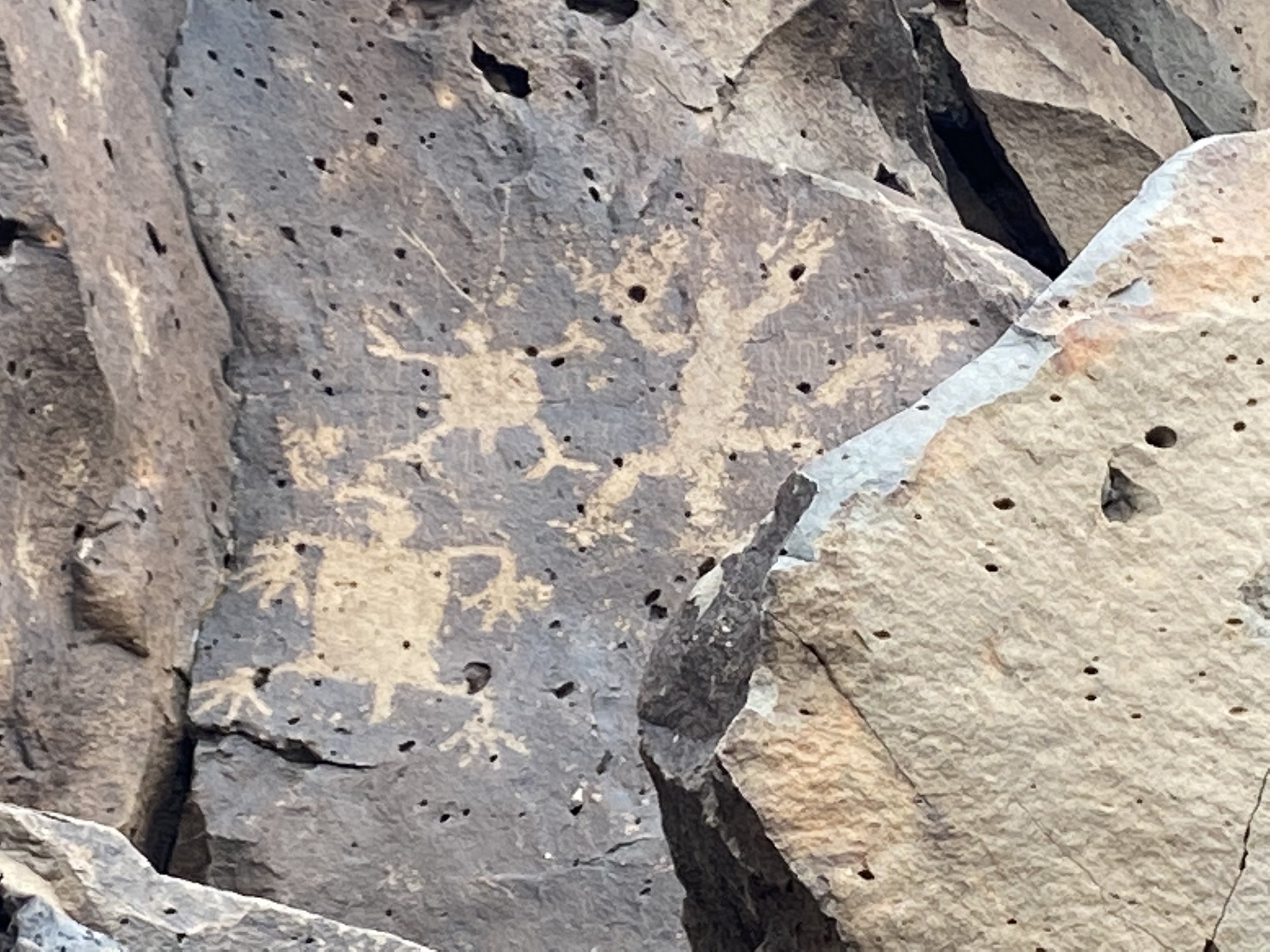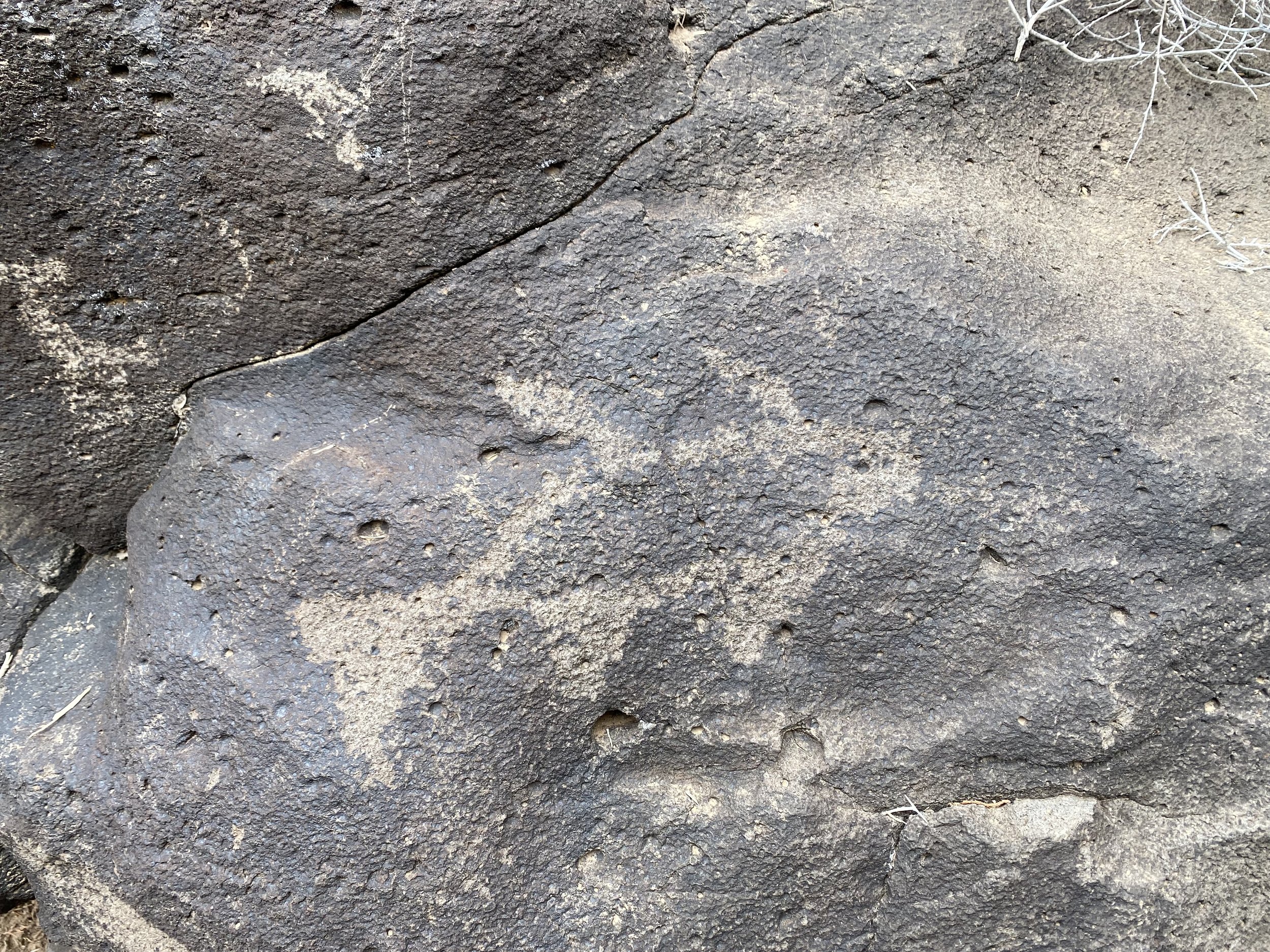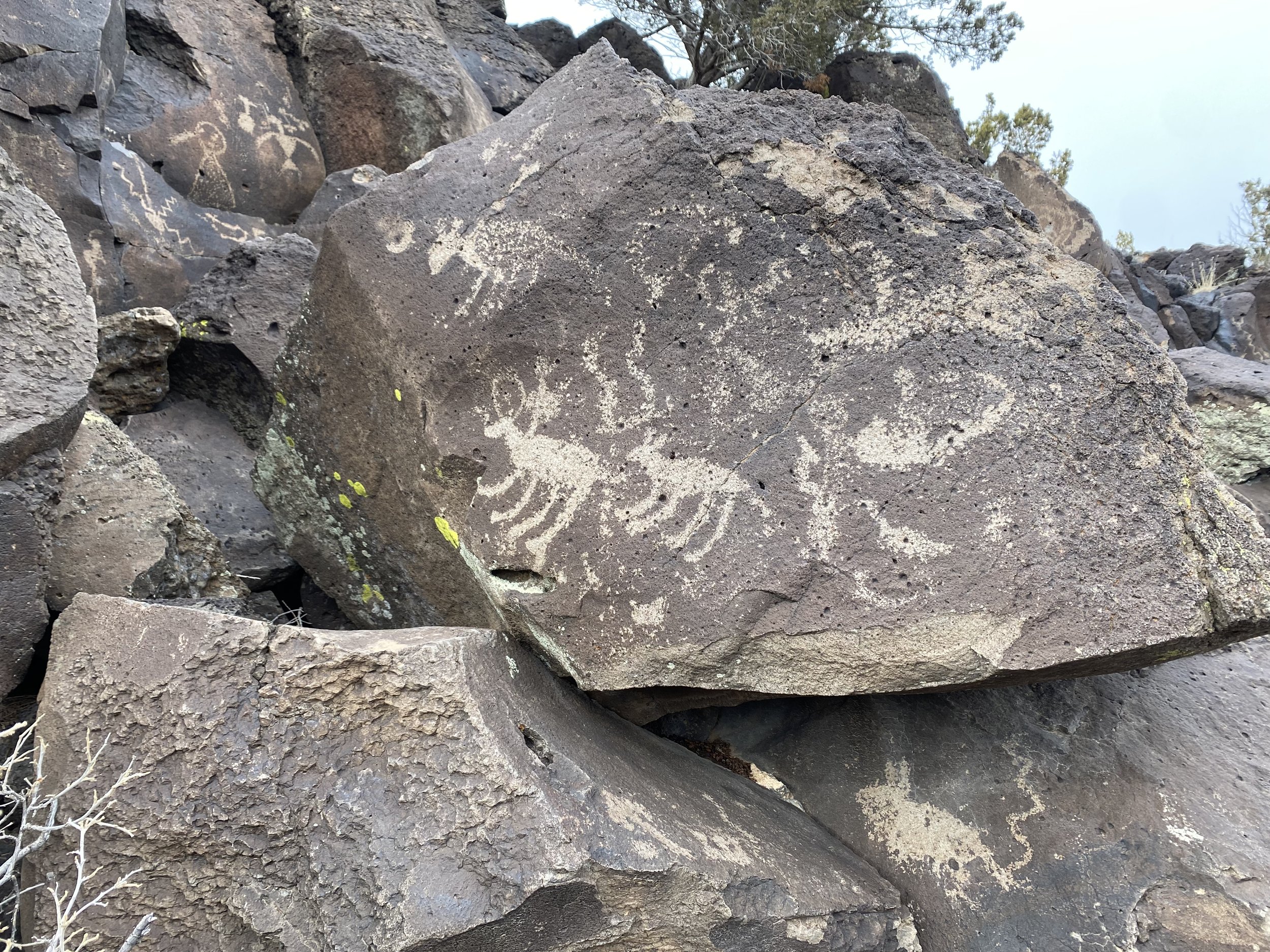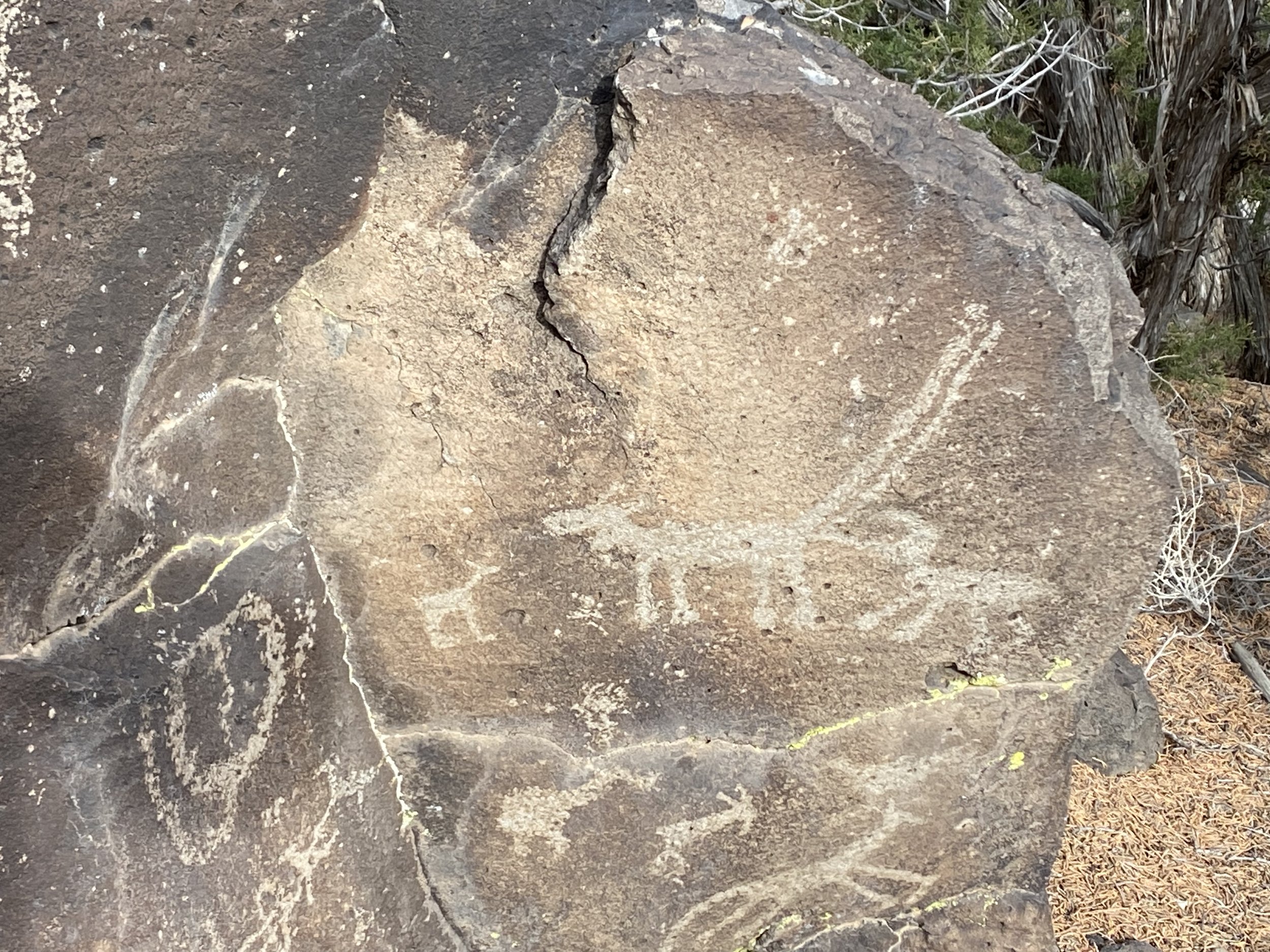Blog: Caja del Rio, a Unique and Historic Convergence of Cultures
Picture a place, a small plateau between the Rio Grande and the Santa Fe River, that was the center of many Indigenous tribal nations for centuries. We know this because of our oral history and the signs and symbols etched in the basalt rim just above the Santa Fe River that date back thousands of years. These signs and symbols depict historical events like the arrival of the Spanish, wildlife common to the area, mysterious and whimsical figures that leave much to one’s imagination, images of plants like corn, and other important navigational landmarks. The meaning of many of these signs and symbols will remain a mystery, as they should. Pondering what once was and being on the land where so much occurred, century after century, one can only imagine what life must have been like in the Caja del Rio area.
Sunset over the Caja del Rio Photo Credit Andrew Black
There are few places in our world more deserving of permanent protection than the Caja del Rio. The recent increase in visitation to this area should be a positive development, but recent abuse and vandalism have caused great concern for so many who know and feel the importance and spirituality of the area. The beautiful petroglyphs pictured above have been repeatedly vandalized. There is a make-shift recreational shooting range near some fossilized camel tracks where shooters take old appliances, televisions, and other household debris and use these items as targets. After using these targets, they are left in the area for someone else to clean up and dispose of. Acts like these make protecting the Caja del Rio a very urgent matter.
Take it from some of our local leaders, in their own words, about the importance of the Caja del Rio:
Joseph L. Villegas Sr., Texas Band of Yaqui Indians, El Valle de La Cieneguilla Land Grant Association, says:
“La Cieneguilla Land Grant (circa. 1698) has a direct link of commonality with the Caja del Rio Land Grant (circa. 1698) which sits next door as our neighbor’s (vecinos) to the north. It is sacred (Sagrada) in tone, Sangre (blood), one heart-beat, one breath, water, wind, sun, moon, and nature for centuries. It will remain sacred (Sagrada) till the end of time.”
Anthony Dorame, Executive Director of the Indigenous Education Network and Tribal Councilman of Tesuque Pueblo says:
“Red and Green Chile, the Zia symbol, and hot air balloons are all the iconic symbols of our state that make us proud to be New Mexican. The entire landscape of New Mexico, and particularly northern New Mexico is the ancestral domain of my people, the Tewa. The landscape itself is the iconic symbol that not only represents who we are as Tewa people, but our continual engagement with the land maintains our cultural and spiritual connection to our home. It is our cultural obligation to serve as the original stewards of this beautiful landscape.
Culturally active sites exist within the Rio Grande del Norte National Monument, the Valles Caldera National Preserve, the Pecos and Sabinoso Wilderness areas, the Carson and Santa Fe National Forests, Bandelier National Monument, La Cieneguilla Petroglyph site, the Caja del Rio plateau and many other areas. I regularly visit these areas with students, elders, and tribal leaders to learn about the cultural significance of these places and to strengthen my voice as an active steward of my homelands. It is critical for all New Mexicans to realize and embrace the aesthetic and cultural beauty of our state for all of the future generations of New Mexicans to enjoy. It is disheartening to witness the abuse of these lands and the mismanagement that occurs when we fail to teach youth and visitors about the significance of our landscape to us. Through active engagement and cooperative management that includes a tribal voice, our landscape, will be preserved for generations.”
This beautiful convergence of cultures and the connection to this special place is perfectly stated in these representations of the people. Protection of sacred places like the Caja del Rio is necessary to fulfill our commitment to future generations of all Americans and to conserve what was, what is, and what will be.

